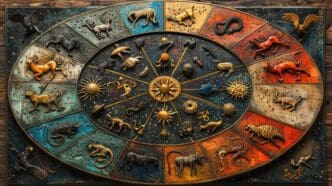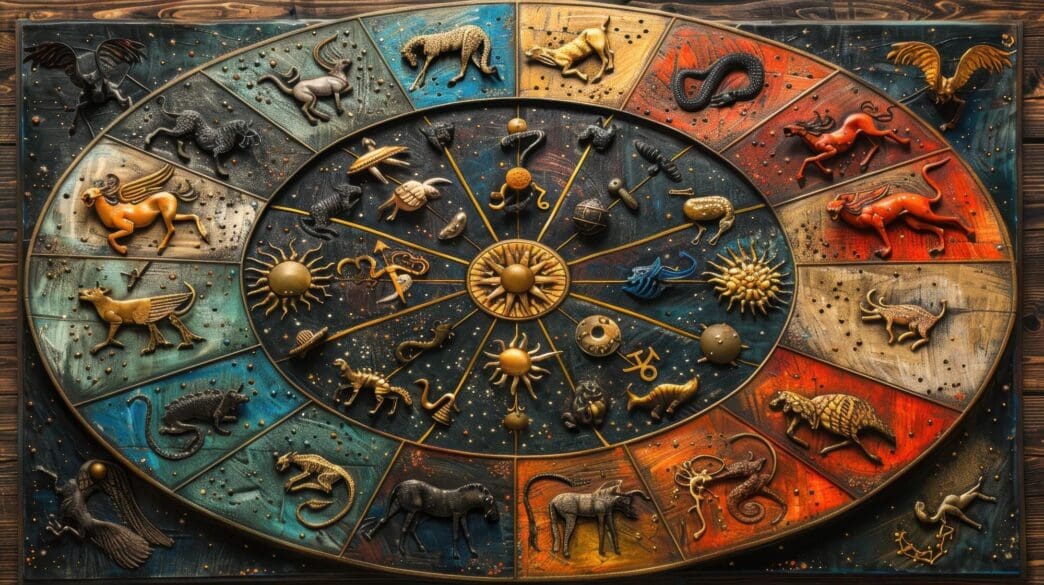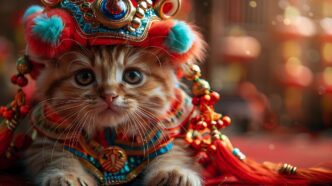Quick Takeaway
Animal & Element Origin
Impact on Personality
Diverse Interpretations
Delving into the ancient wisdom traditions of the world reveals two powerful systems for self-understanding and prediction: Chinese and Western Astrology. While both aim to map personality, destiny, and auspicious timing, they diverge significantly in their origins, methodologies, and interpretative frameworks. This article will explore the fundamental differences and unique strengths of these two distinct astrological traditions, helping seekers worldwide discern which resonates most deeply with their personal journey or how both can offer complementary insights into their life path and daily endeavors.
Understanding Chinese Astrology
Chinese Astrology, rooted in ancient astronomical observations and philosophical principles, primarily revolves around a 60-year cycle formed by the interaction of twelve animal signs and five elements. Each year is assigned a specific animal and an elemental quality, influencing the characteristics and fate of those born within that period. This system emphasizes cycles, harmony, and the interconnectedness of all things, deeply embedded in Taoist philosophy.
Beyond the annual animal sign, Chinese astrology incorporates a more intricate system known as BaZi, or “Four Pillars of Destiny.” This detailed method considers the animal and element associated with the year, month, day, and hour of birth. BaZi provides a profound, nuanced understanding of an individual’s innate strengths, challenges, and life trajectory.
Understanding Western Astrology
Western Astrology, with its origins tracing back to Mesopotamian and Hellenistic traditions, focuses on the positions of celestial bodies—the Sun, Moon, and planets—at the precise moment and location of an individual’s birth. This snapshot of the cosmos, known as a birth chart, is unique to each person. It maps their personality, potential, and life experiences through twelve zodiac signs, twelve houses, and various planetary aspects.
The core of Western astrology lies in the tropical zodiac, which is based on the Earth’s relationship to the Sun and the seasons, rather than the actual constellations. Each of the twelve signs—Aries, Taurus, Gemini, and so on—represents a specific archetype and set of traits. Planets moving through these signs and houses reveal layers of an individual’s psychological makeup and life circumstances.
Key Differences: A Direct Comparison
While both astrological systems offer profound insights, their foundational principles and practical applications exhibit stark contrasts.
Origins and Calendrical Basis
Chinese Astrology is intrinsically tied to the lunisolar calendar, where years are determined by the cycles of the Moon and adjusted to align with the Sun. The Chinese New Year, which marks the transition to a new animal sign, falls on the second new moon after the winter solstice, typically between late January and mid-February. This cyclical, annual focus is fundamental to its predictions.
Conversely, Western Astrology operates on the tropical solar calendar, defining zodiac signs based on the Sun’s apparent path through the sky relative to the Earth’s equinoxes and solstices. Each Western zodiac sign begins on approximately the same date each year, with Aries starting around March 21st at the spring equinox. This fixed, solar-based system underpins its consistent timing.
The Zodiac: Animal vs. Constellation
The Chinese Zodiac features twelve animal signs: Rat, Ox, Tiger, Rabbit, Dragon, Snake, Horse, Goat, Monkey, Rooster, Dog, and Pig. Each animal embodies distinct personality traits and is believed to influence the character of those born under its year. These animals are part of a repeating 12-year cycle, with each year also associated with one of five elements.
The Western Zodiac also has twelve signs: Aries, Taurus, Gemini, Cancer, Leo, Virgo, Libra, Scorpio, Sagittarius, Capricorn, Aquarius, and Pisces. These signs are named after constellations but do not precisely align with their current astronomical positions due to the precession of the equinoxes. They represent archetypal energies and are determined by the Sun’s position at birth.
Core Components and Calculations
For a basic Chinese astrological reading, one primarily needs the birth year to identify the animal sign and its associated element. For deeper insights, the BaZi system requires the exact year, month, day, and hour of birth. This provides four “pillars,” each with an animal and element, creating a complex interaction that describes a person’s life journey and elemental balance.
Western Astrology demands a more precise birth time, date, and location to cast an accurate birth chart. This chart maps the positions of the Sun, Moon, planets, and astrological houses, along with the angles they form (aspects). Each component contributes to a highly individualized and detailed psychological profile, revealing inner drives, relationship patterns, and life themes.
Elemental Systems: Five vs. Four
Chinese Astrology utilizes a five-element system: Wood, Fire, Earth, Metal, and Water. These elements are not static but are in a constant state of creation and destruction, influencing each other in a dynamic cycle. They are associated with seasons, directions, colors, organs, and emotions, adding layers of meaning to an individual’s elemental makeup and health.
Western Astrology typically employs a four-element system: Fire, Earth, Air, and Water. Each of the twelve zodiac signs is assigned one of these elements, which helps categorize their fundamental temperament and approach to life. For example, Fire signs (Aries, Leo, Sagittarius) are often seen as passionate and energetic, while Water signs (Cancer, Scorpio, Pisces) are typically emotional and intuitive.
Focus and Interpretation
Chinese Astrology often emphasizes communal harmony, cyclical fortune, and practical guidance for auspicious timing in events like marriage, business, or travel. Its predictions frequently focus on annual outlooks, career prospects, and health based on the interplay of the year’s ruling animal and element with one’s personal BaZi. It offers a framework for understanding one’s place within the larger cosmic flow.
Western Astrology tends to focus more on individual psychology, personality traits, and personal growth. It delves into inherent talents, challenges, and relationship dynamics, providing a roadmap for self-discovery and conscious development. Predictive techniques like transits and progressions analyze how current planetary movements interact with the birth chart, indicating periods of change and opportunity for personal evolution.
Complementary Perspectives
Instead of viewing Chinese and Western astrology as mutually exclusive, many find value in exploring both systems. Each offers a unique lens through which to understand oneself and the world. Chinese astrology can provide insights into one’s social roles, family dynamics, and the broader cyclical influences shaping their environment. It offers a more collective and practical outlook on the ebb and flow of fortune.
Western astrology excels at detailing individual psychological nuances, inner motivations, and the complex tapestry of one’s personal journey. It can illuminate subconscious patterns and guide personal development. Together, they can paint a remarkably rich and comprehensive picture, offering both a macro (cyclical, environmental) and micro (personal, psychological) understanding of existence.
Choosing Your Path
Ultimately, the choice between Chinese and Western astrology, or the decision to explore both, comes down to personal resonance and what specific insights one seeks. Some may feel a stronger connection to the wisdom of the animal signs and elemental cycles, finding comfort in the annual guidance and practical advice offered by Chinese astrology. Others might gravitate towards the detailed psychological blueprint provided by a Western birth chart, seeking deeper self-understanding and personal growth.
Both systems stand as profound testaments to humanity’s enduring quest to find meaning in the cosmos and navigate the complexities of life. They are not merely predictive tools but rich philosophical frameworks that encourage introspection, mindfulness, and a deeper appreciation for the intricate dance between humanity and the universe.








